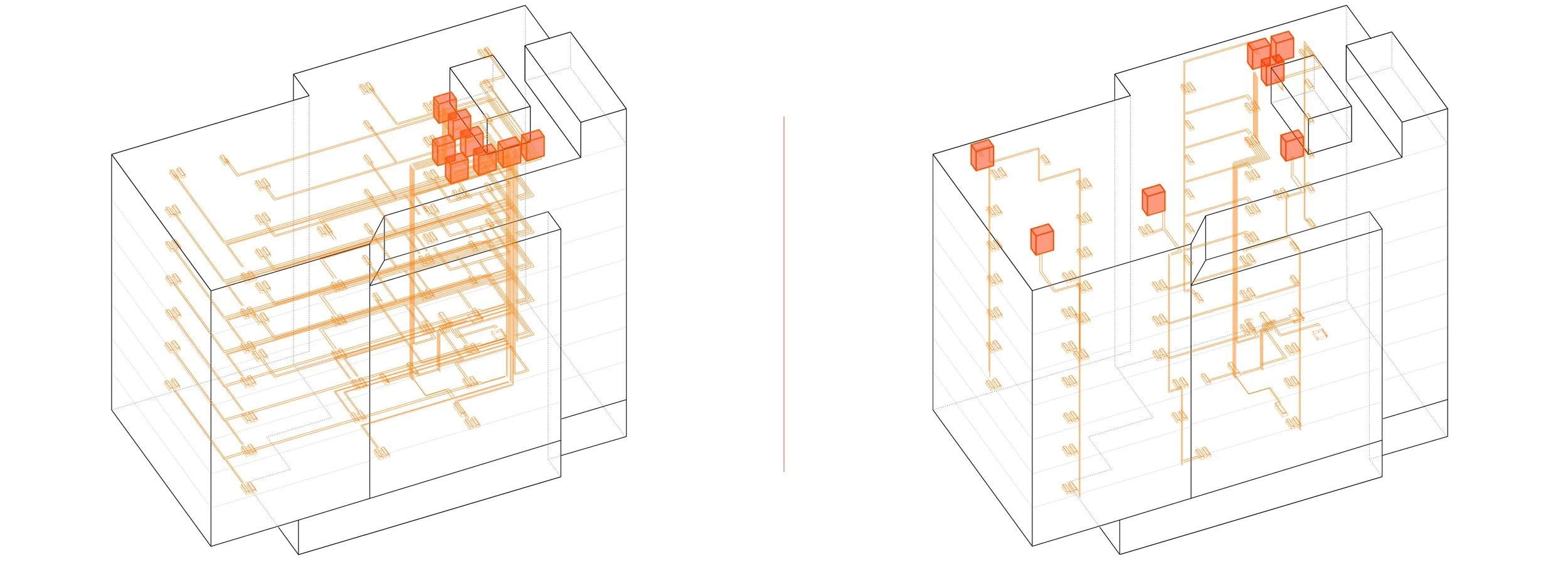MAP Embodied Carbon Work Highlighted in Architectural Record
The excerpt below is from:
Taking a Holistic Approach to Embodied Carbon
by Fred A. Bernstein
Refrigerant Piping Options: Dekalb Commons
For more than 30 years, Passive House principles have been a valuable guide to making buildings energy efficient. But now, with steady improvements in our understanding of embodied carbon—the carbon emitted when building materials are created, transported, and installed—the overall carbon impact of Passive House construction has become a subject of concern.
Just how much energy does it take to make the added insulation, extra layers of glazing, and other features required to meet Passive House standards, compared to how much energy those features might save over time? “A decade ago, we would talk about the tremendous benefits of operational-energy savings,” says Alan Barlis, a principal at BarlisWedlick, a New York–based firm that has completed about 25 certified Passive House buildings. “Today we tell the rest of the story, and a big part of that story is embodied carbon.”

